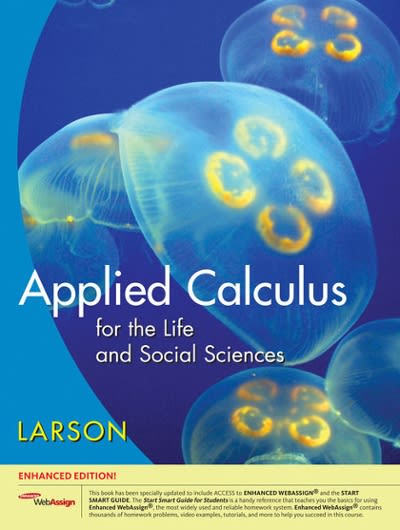Question
Two wine tasters rate each wine they taste on a scale of 1 to 5. From data on their ratings of a large number of
Two wine tasters rate each wine they taste on a scale of 1 to 5. From data on their ratings of a large number of wines, we obtain the following probabilities for both tasters' ratings of a randomly chosen wine:
Taster 2
Taster1. 1 2. 3. 4. 5.
- 0.03 0.02 0.01 0.00 0.00
- 0.02 0.07 0.06 0.02 0.01
- 0.01 0.05 0.25 0.05 0.01
- 0.00 0.02 0.05 0.20 0.02
- 0.00 0.01 0.01 0.02 0.06
(a)Why is this a legitimate assignment of probabilities to outcomes?
(b)What is the probability that the tasters agree when tasting wine?
(c)What is the probability that Taster 1 rates a wine higher than 3? What is the probability that Taster 2 rates a wine higher than 3?
(d)Taster 1's rating for a wine is 3. What is the conditional probability that Taster 2's rating is higher than 3?
(e)What is the probability that Taster 1's rating is higher than Taster 2's rating for a randomly chosen wine?
Step by Step Solution
There are 3 Steps involved in it
Step: 1

Get Instant Access to Expert-Tailored Solutions
See step-by-step solutions with expert insights and AI powered tools for academic success
Step: 2

Step: 3

Ace Your Homework with AI
Get the answers you need in no time with our AI-driven, step-by-step assistance
Get Started


